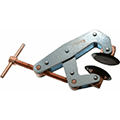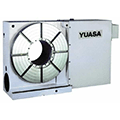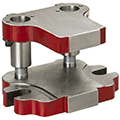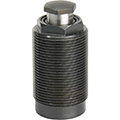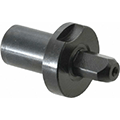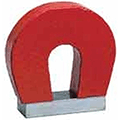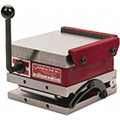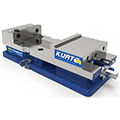Clamping, Workholding & Positioning
Clamping Tools
Metalworkers and woodworkers know that the right clamping tools are essential for minimizing discrepancies. Whether you’re working on a small project at home or a large commercial job, the proper tools ensure superior-quality products.
At Penn Tool Co., we understand that to do a job well, you require reliable and precise equipment. That’s why we supply products from the industry’s top brands, including Kurt, Heinrich, and Teco.
As professionals in the industry, we’re dedicated to providing only the very best tool clamps and vises. Browse our diverse collection, below; then, continue reading to learn more about the benefits of professional workholding equipment.
Clamping, Workholding, and Positioning Equipment
- What is the principle of clamping and workholding?
- How do you use clamping tools?
- How do you find the right workholding tools for your workshop?
The Principle of Clamping and Workholding
Clamping and workholding is a fundamental principle of machining. It dictates that a workpiece must be fastened to machine tools securely to ensure that it doesn’t move during operation.
Clamping vises are essential in providing stability and maximizing accuracy during operations like drilling, milling, and filing. When used correctly, clamps enable you to make cuts with minimal risk of deflection or movement.
Best of all, there are many different types of clamps available on the market. Depending on your needs, you’ll find toggle clamps, sliding arm clamps, C-clamps, and more.
How to Use Clamping Tools
- Understanding the Types of Clamps
- Selecting the Right Clamp for Your Project
- Tips for Using Clamps Effectively
Understanding the Types of Clamps
There are several types of clamps available, and each is designed for a specific purpose. Some of the most common clamps used in woodworking and metalworking operations include:
- C-Clamp: A C-clamp is a versatile clamp that can be used to hold two pieces of material together or secure a workpiece to a bench or table. It has a fixed jaw and a threaded screw that is used to adjust the clamping pressure.
- Bar Clamp: A bar clamp is a long clamp that is used to apply pressure to a large area. It has a sliding jaw that can be adjusted along the bar to fit different-sized materials.
- Pipe Clamp: A pipe clamp is a type of bar clamp that uses a pipe as the bar. It is commonly used for larger projects and can be adjusted to fit different-sized materials.
- Spring Clamp: A spring clamp is a lightweight clamp that is ideal for holding smaller materials together. It has a spring-loaded jaw that applies pressure to the material.
- Hand Screw Clamp: A hand screw clamp is a traditional woodworking clamp that uses a screw to apply pressure to the material. It has two jaws that can be adjusted to fit the material.
Selecting the Right Clamp for Your Project
Selecting the right clamp for your project requires an understanding of the type of material you are working with and the type of joint you are creating. Here are some tips for selecting the right clamp for your project:
- Determine the size of the material: Measure the size of the material you are working with to ensure that the clamp is long enough to apply the necessary pressure.
- Consider the type of joint: Different types of joints require different clamping techniques. For example, a miter joint may require a bar clamp, while a butt joint may require a C-clamp.
- Consider the clamping force: The amount of pressure needed to hold the material together will depend on the type of material and the joint. A hardwood joint will require more clamping force than a softwood joint.
- Consider the shape of the material: Some materials, such as round or irregular-shaped materials, may require a specialized clamp.
Tips for Using Clamps Effectively
Using clamps effectively is crucial to achieving the desired result. Here are some tips for using clamps to maximize your effectiveness:
- Apply even pressure: Ensure that the pressure is evenly distributed across the material to prevent warping or twisting.
- Use scrap wood: Place a scrap piece of wood between the clamp and the material to prevent damage to the surface.
- Avoid over-tightening: Over-tightening can damage the material or create a weak joint. Tighten the clamp until it is snug, and then check the joint for stability.
- Consider the direction of the force: If the force is applied perpendicular to the joint, the clamp should be placed parallel to the joint to prevent the material from shifting.
- Use multiple clamps: For larger projects or materials, multiple clamps may be needed to apply the necessary pressure.
In conclusion, workholding is an essential part of any woodworking or metalworking operation, and using the right clamping tool is crucial to achieving
How to Find the Right Workholding Tools for Your Workshop
There are several things that you must consider when choosing the best workholding and positioning equipment for your needs. Here are a few questions to answer before you start shopping for clamps and vises:
- What’s the work?
- What’s the size of the workpiece?
- What type of surface will the workpiece be attached to?
First, consider the type of work you’ll be doing.
Are you working with wood, metal, or another material? Each material has different requirements when it comes to clamping and holding.
Next, take a look at the size of your projects.
Will you be working on small pieces that can be held in place easily, or larger projects that require more support?
You may need to decide between one or two large, heavy-duty clamps and several smaller clamps.
These decisions depend on the size and shape of your workpiece, the surface of your workspace, and other necessary tools.
Finally, think about the surface that supports the workpiece.
Remember the workholding principle? Your clamping vise must complement the work surface to maximize stability and minimize the risk of damage.
If the workbench is made of wood, for example, look for a workholding clamp that has adjustable jaws with serrated or soft gripping surfaces. If the surface is made of metal, consider a vise that has hardened steel jaws or rubber-padded jaw faces.
Ultimately, you must ensure that your workpiece is held in place securely so that you can work without risk of harm to the workpiece or the operator.
Tool Clamps and Vises from Penn Tool Co.
The Ellis Replacement Camlock Saw Vise is a robust and reliable tool clamping and workholding solution for busy workshops. Designed to fit a wide range of saw blades, this vise features camlock action that securely clamps the blade into place without the need for additional tools.
The Wahlstrom Float Lock Drill Press Vise is an exceptional tool for metalworkers and woodworkers alike. This vise features a T-bolt mounting clamp that ensures stability while in use, but is easy to clear out of your way when it isn’t.
Find the Best Workholding Clamps for Your Shop at Penn Tool Co.
The best way to find the right tools for your needs is to consult with a professional, like the experts at Penn Tool Co. Our metalworking and woodworking experts empower you to find the right equipment for your specific needs.
Fasten your workpieces for a safer and more efficient work environment with superior clamping tools from Penn Tool Co. To find the best workholding equipment for your business, reach out to our team today.

